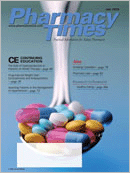Publication
Article
Pharmacy Times
Compounded Treatments for Migraines
Author(s):
Millions of Americans sufferthe debilitating effects ofmigraines. The exact cause ofmigraine headaches remains somethingof a mystery, and there is no specificcure, though symptoms can usually bemanaged with lifestyle changes andmedications to reduce the frequency ofoccurrence and reduce the pain once itbegins. While traditional medicine offersmany options, some patients insteadturn to a compounding pharmacist foradvice about treatment alternatives.Compounding offers a variety of choicesfor relief of migraine pain, which areoften more cost-effective than commonlyused commercial prescriptions andmay, in some cases, have a lower risk ofside effects.
Treatment Options
A good compounding pharmacy isoften able to offer both OTC and prescriptionalternatives for the treatment ofmigraines. One highly effective OTC medicationis a capsule dosage containingketoprofen 12.5 mg, riboflavin 100 mg,and caffeine citrate 100 mg.1,2 This combinationoffers pain relief quickly, with somereports of relief within as little as 15 minutes.Directions generally indicate 2 capsulesat the onset of headache and every4 hours as needed until pain subsides. Ifneeded, the strengths may be increasedwith a physician's prescription.
A prescription compound that hasproven effective in treating migraine painis a lidocaine nasal solution, usually writtenin a 2.5% to 4.5% concentration.Typical directions for use are 10 to 15drops instilled into the nostril on theaffected side at the onset of headache.The dose may be repeated after 15 to 20minutes if needed and may be used up to4 times daily.3 This therapy has few sideeffects, aside from a localized stinging orburning sensation.
Another time-tested alternative for thetreatment of migraine pain includes combinationergotamine and caffeine capsulesor suppositories, which may alsoinclude pentobarbital upon physician'sorders.4 The dosage can be tailored to thepatient's individual needs. Antiemeticssuch as promethazine may also be addedto many compounded preparations tocounteract symptoms of nausea, whichoften accompany migraine pain. Whileoral dosage forms are still the most commonlyprescribed, it is important toremember that, with current compoundingtechnology, a host of other optionsexist to meet the needs of specificpatients. Dosage forms are widely variedand may include any of the following:
- Oral capsules or liquids
- Rapid-dissolving tablets
- Nasal sprays or drops
- Suppositories
- Sublingual drops
Other Important Considerations
Other factors to consider when dealingwith the issue of chronic or recurrentmigraines are hormone balancing andadrenal function. Three times as manywomen as men suffer from migraineheadaches, and this fact alone warrantscareful examination. With many of today'scompounding pharmacies specializing inbioidentical hormone replacement therapy,patients may in fact be better served toexamine their hormone levels, perhaps bycharting their headaches in relation totheir cycle. If a hormonal imbalance is infact a potential cause for the migraines,the problem can be addressed from thatperspective, potentially eliminating theneed for medication to treat migraine painaltogether.
Conclusion
With the increasing number of treatmentoptions available for migraine pain,nearly every patient who suffers thepainful effects of migraines can obtainrelief. When a patient, physician, andpharmacist work together to aid thepatient, with the resources of commercialmedicine and the expanded possibilitiesavailable through prescription compounding,successful treatment and/orprevention of migraine pain is all butinevitable.
Ms. Fields is with the InternationalJournal of Pharmaceutical Compoundingand is a pharmacy technicianat Innovative Pharmacy Servicesin Edmond, Okla.
For a list of references, send astamped, self-addressed envelope to:References Department, Attn. A. Stahl,Pharmacy Times, 241 Forsgate Drive,Jamesburg, NJ 08831; or send an e-mailrequest to: astahl@ascendmedia.com.







